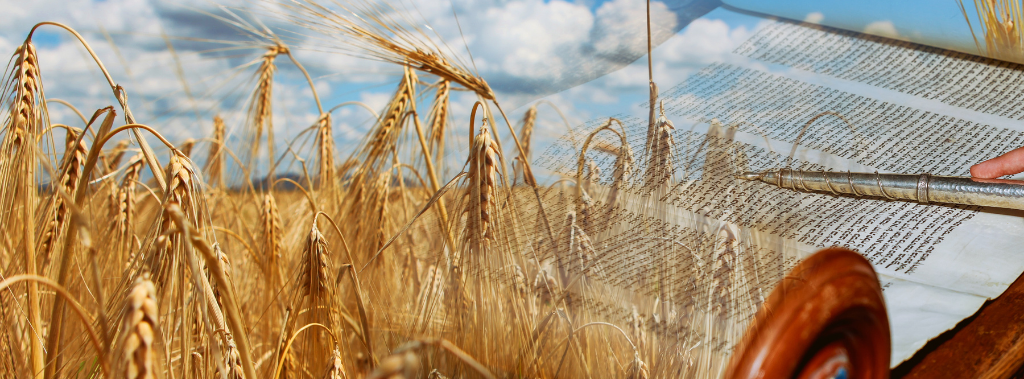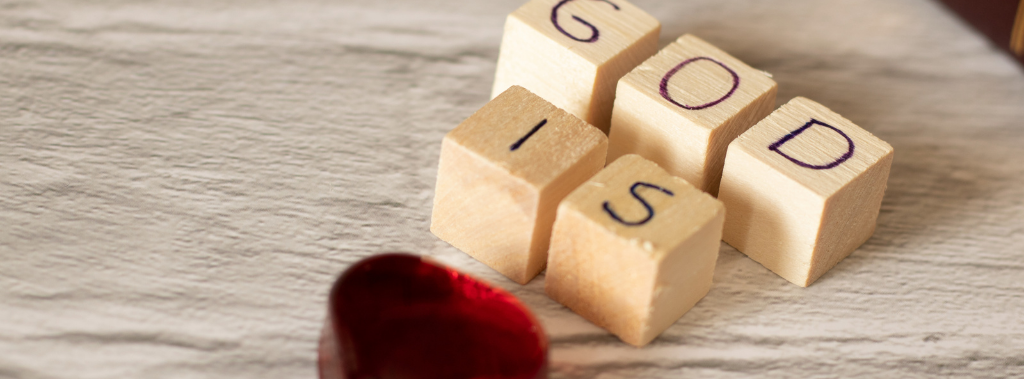Shavuot | Ruth, Harvest, and the Law
Many ask…
- What is the connection between Shavuot and Ruth (the book in the Bible)? Why is the story of Ruth read on Shavuot?
- How is Shavuot related to the harvest and firstfruits?
- How is Shavuot connected to the giving of the law?
- Is Shavuot a prophetic picture for us today?
The Connection between Shavuot and Ruth
Traditionally on Shavuot, many Jewish communities devote a full night to the reading of Torah, remembering and celebrating the giving of God’s law. On the second day of Shavuot, many services also include reading the book of Ruth.
Ruth was a Moabite, a Gentile by birth. Some scholars believe she was a high-ranking Moabite, praying and worshipping an idol named Chemosh. However, she married a Hebrew, Naomi’s son, Mahlon. She came to know and revere the God of Israel and declared her conversion after her husband died.
“…Ruth said: ‘Entreat me not to leave you, or to turn back from following after you; for wherever you go, I will go; and wherever you lodge, I will lodge; your people shall be my people, and your God, my God. Where you die, I will die, and there will I be buried. The Lord do so to me, and more also, if anything but death parts you and me.’”
—Ruth 1:16-17

Shavuot and Ruth | 3 Reasons Why the Story of Ruth is Read on Shavuot
- A Focus on the Harvest
Shavuot and Ruth’s story in the Bible focuses on harvest and firstfruits. You can see this theme throughout the book.
“So Naomi returned, and Ruth the Moabitess her daughter-in-law with her… they came to Bethlehem at the beginning of barley harvest.”
“…she stayed close by the young women of Boaz, to glean until the end of barley harvest and wheat harvest; and she dwelt with her mother-in-law.”
—Ruth 1:22, 2:23 (emphasis added)
Boaz finds Ruth gleaning his barley field behind the harvesters. It is believed this was done during Shavuot, the time of firstfruits. Under the guidance of her mother-in-law, Ruth goes to Boaz on his threshing floor during Shavuot with the expectation of redemption according to the law.
Ruth was redeemed at the time of the harvest and firstfruits. Her destiny had arrived. Through her obedience, God blessed her, Naomi, and those to come. Ruth is the grandmother of King David and is in the lineage of Jesus.
“…You are witnesses this day that I have bought all that was Elimelech’s, and all that was Chilion’s and Mahlon’s, from the hand of Naomi. Moreover, Ruth the Moabitess, the widow of Mahlon, I have acquired as my wife, to perpetuate the name of the dead through his inheritance, that the name of the dead may not be cut off from among his brethren and from his position at the gate. You are witnesses this day.”
—Ruth 4:9-10
- An Embracing of the Law
Shavuot is a celebration and remembrance of the moment that God gave the Law to Moses at Mount Sinai. After Passover, Israel was finally released from bondage in Egypt. At Shavuot, they were given instructions on how to respond to their freedom. This was given through the Law, or Torah.
The intent was to embrace the law, or instruction, on how to have a relationship with a Holy God.
The word “Shavuot” literally means “weeks.” It comes 7 weeks after Passover, which aligns perfectly with Moses receiving the Law at Mount Sinai.
Understanding that in the past they did not fully embrace the gift of the law, the Jewish community puts forth a special effort to be thankful for this gift in the modern day. They look to Ruth as an example of cherishing the law—a Gentile woman who fully and completely gave up her old life and embraced her new family. She loved the God of Abraham, Isaac, and Jacob.
Shavuot and Ruth both embrace God’s instruction as a loving Father ready to receive those who are adopted into His family.
“And Boaz answered and said to her, ‘It has been fully reported to me, all that you have done for your mother-in-law since the death of your husband, and how you have left your father and your mother and the land of your birth, and have come to a people whom you did not know before.’”
—Ruth 2:11
- A Prophetic Picture of the One New Man
As One New Man Believers, you can see a prophetic picture of God’s plan to bring Jew and Gentile together as a 3-stranded cord united in Him.
Naomi (a Jew) and Ruth (a Gentile) came together as one family. Both were found under the wings of God’s protection. Like Ruth, we have been grafted into the Jewish root of promise. We are able to enjoy the benefits of an abundant harvest and the law. We can give the firstfruits of our increase and expect, just as Ruth, to be redeemed, cared for, and blessed by the Lord.
“The Lord repay your work, and a full reward be given you by the Lord God of Israel, under whose wings you have come for refuge.”
—Ruth 2:12

Shavuot and Believers | Falling in Love with God’s Instructions
As a Believer who seeks to understand the roots of your faith, you know the benefits of God’s instructions. Though the enemy will use your circumstances to tell you that God’s laws and principles are restricting, legalistic, or unnecessary, the Word clearly tells us not to forget the benefits!
Sometimes we need to remind our souls, as King David did, that God’s law releases blessings. Celebrate Shavuot like Ruth… with an expectation of blessing, harvest, and joy. Allow the Spirit to draw you into the fullness of God.
Remind Your Soul of God’s Love and Blessings…
“Bless the Lord, O my soul;
and all that is within me, bless His holy name!
Bless the Lord, O my soul,
and forget not all His benefits:
Who forgives all your iniquities,
Who heals all your diseases,
Who redeems your life from destruction,
Who crowns you with lovingkindness and tender mercies,
Who satisfies your mouth with good things,
so that your youth is renewed like the eagle’s.”
—Psalm 103:1-5
Remind your soul that Shavuot is a time of expectation, a time of blessing, and a time of harvest!
Let us say this Shavuot: ‘Baruch atah Adonai, ve chag Shavu’ot sameach!’ or ‘Blessed be the Lord, and happy Shavuot holiday!’
Shavuot and Ruth are beautiful pictures of God’s good instructions that bring healing, protection, and redemption.
